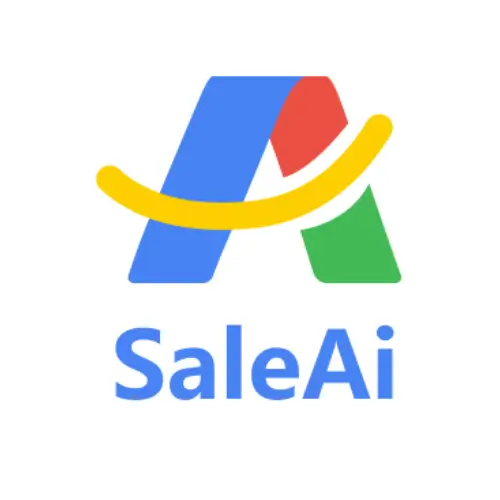Introduction: The Modern Challenge of Product Sourcing
Globalization has expanded sourcing opportunities for businesses, but it has also introduced unprecedented complexity. With countless suppliers, fluctuating costs, and evolving regulations, finding the right sourcing partners is no small feat.
Traditional sourcing methods—relying on outdated directories, manual research, or fragmented data—are no longer sufficient to keep pace with today’s competitive and dynamic market environment. Businesses need access to optimized product sourcing data to make informed decisions, reduce risks, and maximize efficiency.
This is where SaleAI comes into play. SaleAI’s AI-powered platform provides companies with comprehensive sourcing data, enabling them to identify reliable suppliers, optimize costs, and build resilient supply chains.
But how exactly does optimized product sourcing data transform supply chains? Let’s explore.
What Is Optimized Product Sourcing Data?
Optimized product sourcing data refers to the use of real-time, AI-driven insights to identify the best suppliers, evaluate costs, and streamline procurement processes.
Key Features Include:
- Comprehensive Supplier Analysis: Evaluate suppliers based on trade volumes, regions, and reliability.
- Cost Optimization: Identify sourcing opportunities that align with your budget and quality requirements.
- Risk Assessment: Analyze geopolitical, economic, and regulatory risks associated with specific sourcing regions.
- Sustainability Insights: Discover suppliers that align with your company’s sustainability goals.
By leveraging optimized sourcing data, businesses can move beyond trial-and-error approaches to create efficient, predictable, and scalable supply chains.
The Role of SaleAI in Optimizing Product Sourcing
SaleAI offers a robust set of tools designed to make product sourcing smarter and more efficient. Here’s how:
a. Comprehensive Supplier Database
SaleAI provides access to a global database of suppliers, complete with detailed insights into their operations.
- View supplier trade volumes, regions of operation, and historical reliability.
- Filter suppliers by product categories (HS codes) and regions.
- Access key metrics, such as delivery timelines, average costs, and certifications.
Example: A packaging company seeking bioplastic suppliers can use SaleAI to identify verified suppliers in Asia and Europe, complete with trade data to evaluate reliability.
b. Cost Optimization Tools
SaleAI helps businesses minimize procurement costs without compromising quality.
- Price Comparisons: Compare supplier pricing across multiple regions.
- Tariff Analysis: View tariff rates and additional costs for sourcing from different countries.
- Shipping Cost Insights: Identify regions with lower transportation costs based on trade flows.
Example: A furniture manufacturer can use SaleAI to compare wood suppliers in South America, factoring in material costs, tariffs, and shipping expenses to determine the most cost-effective option.
c. Supplier Risk Assessment
SaleAI enables businesses to evaluate potential risks associated with suppliers or sourcing regions.
- Geopolitical Risk Alerts: Stay informed about political instability or trade disputes that could impact sourcing.
- Economic Indicators: Monitor currency fluctuations and economic conditions in sourcing regions.
- Supplier Reliability Scores: Access AI-generated reliability scores based on trade history and performance metrics.
Example: A pharmaceutical company can assess the risk of sourcing raw materials from a country with ongoing trade sanctions, ensuring supply chain continuity.
d. Sustainability Insights
As sustainability becomes a priority for businesses and consumers alike, SaleAI offers tools to align sourcing strategies with environmental goals.
- Eco-Friendly Suppliers: Identify suppliers offering sustainable materials or production processes.
- Carbon Footprint Analysis: Evaluate the environmental impact of sourcing from specific regions.
- Certification Verification: Access supplier certifications, such as ISO or Fair Trade.
Example: A clothing brand can use SaleAI to source organic cotton from certified suppliers in regions with lower environmental impact.
e. Predictive Analytics for Sourcing Trends
SaleAI’s predictive analytics capabilities take sourcing to the next level.
- Supply Chain Trends: Anticipate shifts in demand and supply for specific products or materials.
- Price Forecasting: Identify potential cost fluctuations based on market trends.
- Seasonal Insights: Plan sourcing strategies around peak demand or production periods.
Example: An electronics manufacturer can use predictive insights to source semiconductor chips ahead of anticipated price spikes.
Why Optimized Product Sourcing Data Matters
a. Reducing Costs
By identifying cost-effective suppliers and regions, businesses can significantly reduce procurement expenses while maintaining quality.
b. Improving Supply Chain Resilience
Access to risk assessments and geopolitical insights enables businesses to avoid disruptions and maintain continuity.
c. Enhancing Operational Efficiency
With AI-driven sourcing tools, businesses can streamline procurement processes, reducing the time and effort required for supplier evaluation.
d. Supporting Sustainability Goals
Optimized sourcing data helps businesses align with environmental and ethical standards, enhancing their brand reputation.
Real-World Applications of SaleAI’s Optimized Sourcing Data
a. Case Study: Reducing Costs in the Automotive Industry
A car manufacturer struggling with rising material costs used SaleAI to identify alternative suppliers for steel in Southeast Asia. By comparing pricing, tariffs, and shipping costs, the company reduced procurement expenses by 18%.
b. Case Study: Mitigating Risk in the Food Industry
A global food brand sourcing raw ingredients faced disruptions due to geopolitical tensions. SaleAI’s risk alerts enabled them to shift sourcing to safer regions, avoiding supply chain delays.
c. Case Study: Supporting Sustainability in Retail
A retail company used SaleAI to source eco-friendly packaging materials, identifying suppliers with the lowest carbon footprint and meeting their sustainability targets.
How to Get Started with SaleAI for Product Sourcing
- Sign Up for SaleAI: Create an account and explore its sourcing tools.
- Define Your Goals: Identify your priorities, such as cost reduction, risk mitigation, or sustainability.
- Analyze Supplier Data: Use SaleAI’s filters and analytics to evaluate potential suppliers.
- Develop a Sourcing Strategy: Leverage insights to create a comprehensive sourcing plan.
- Monitor and Adapt: Continuously track supplier performance and market trends to refine your strategy.
Conclusion: Building Smarter Supply Chains with Optimized Sourcing Data
In the competitive world of global trade, businesses need more than intuition to succeed—they need data. Optimized product sourcing data, powered by platforms like SaleAI, empowers businesses to make smarter decisions, reduce costs, and build resilient supply chains.
Whether you’re sourcing raw materials, components, or finished products, SaleAI provides the tools you need to thrive. Take the guesswork out of sourcing and start building a smarter, more efficient supply chain with SaleAI today.





